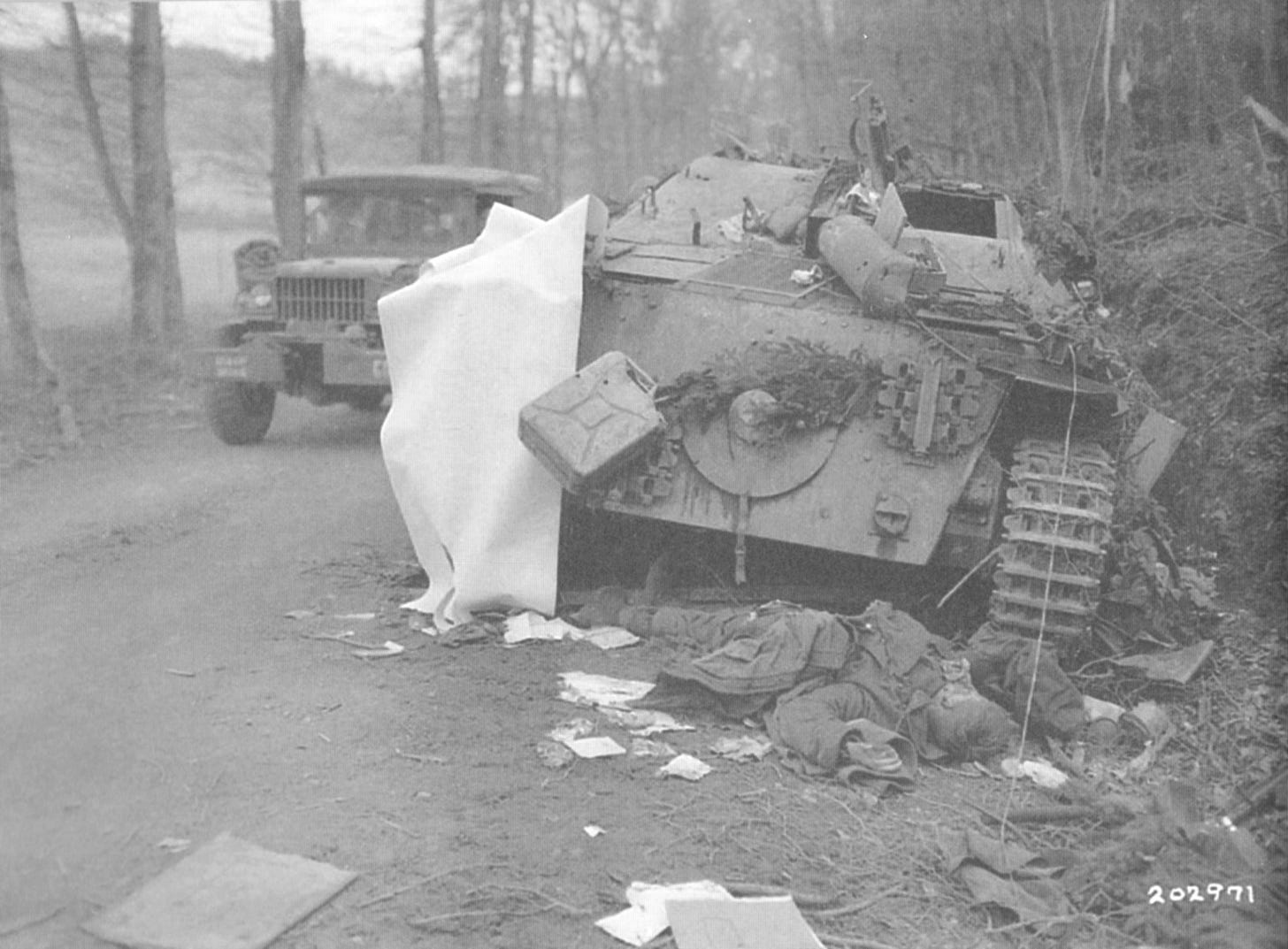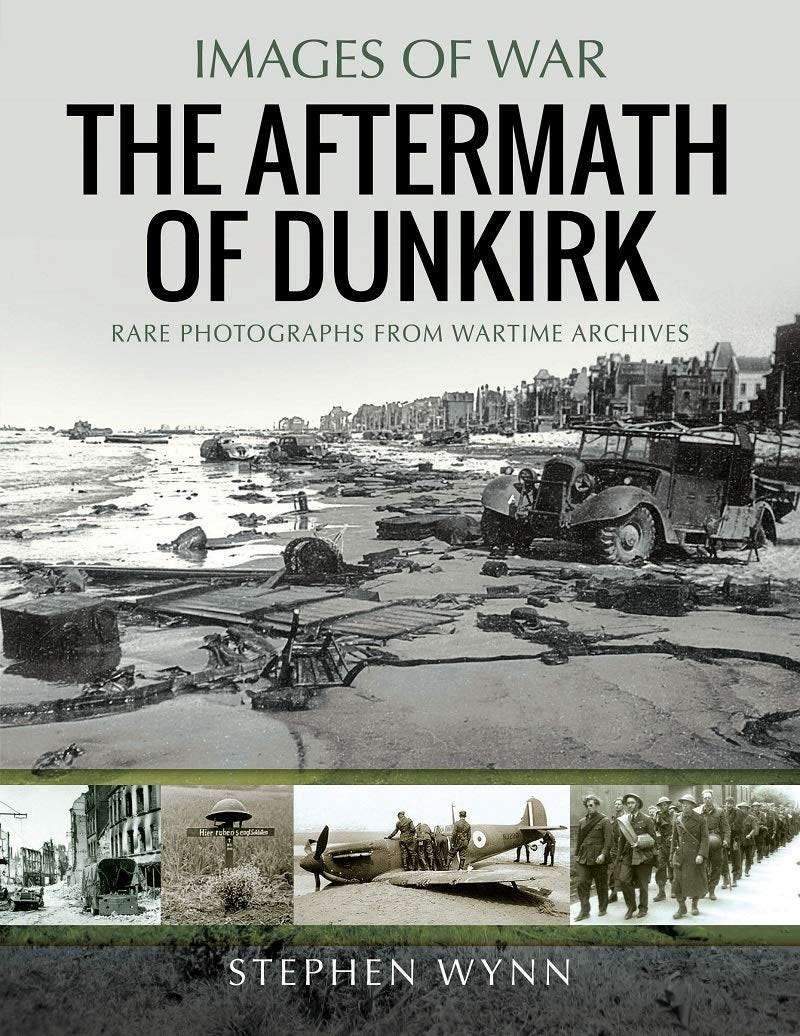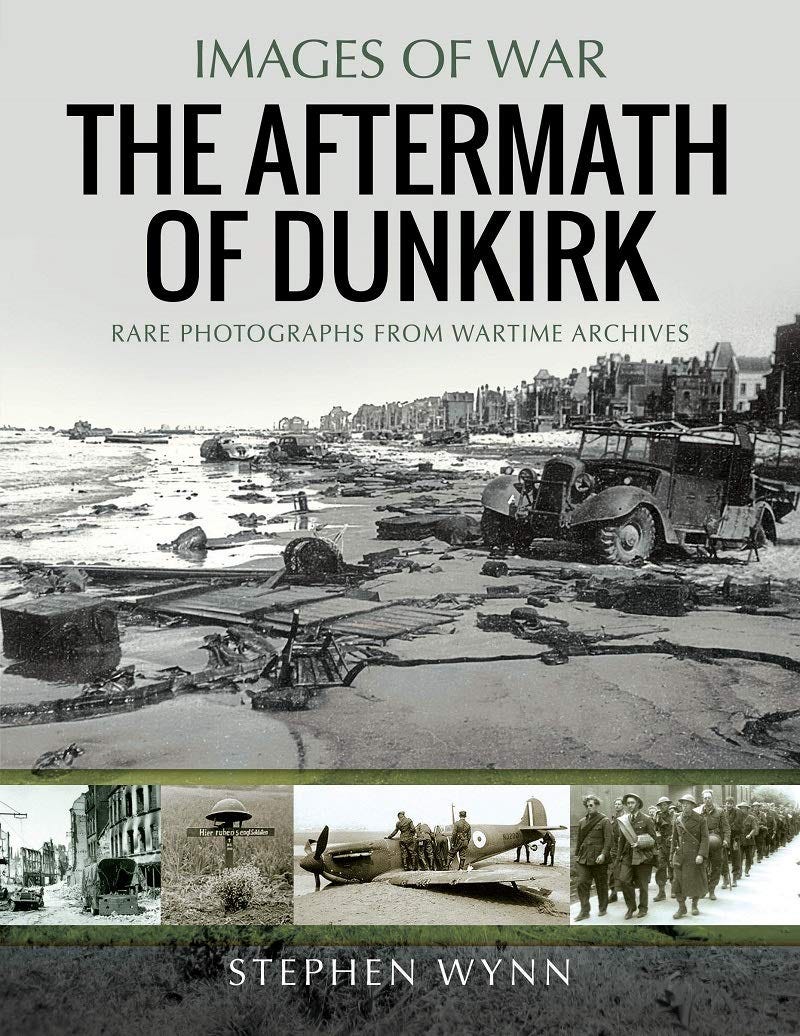Dunkirk and the Aftermath
Rare photographs from the Wartime Archives
Last week I featured ‘The Shetland Bus - Transporting Secret Agents across the North Sea in WW2’ and someone suggested that we look at another Stephen Wynn book published in 2021. ‘The Aftermath of Dunkirk’ ( published in Britain as ‘Dunkirk and the Aftermath’) is from the popular Pen & Sword Images of War series which are predominantly collections of contemporary images with some informed commentary.
There are quite a few well known images from Dunkirk in this book - but some have left me thinking. Rather than review ‘Dunkirk and the Aftermath’, I prefer this week to just feature some of the images with captions from this volume, along with a short excerpt.
Comments are welcome - as usual - and I have a few complimentary subscriptions of a couple of months each to give away, to those contributing well informed comments.



During their meeting with Hitler on 24 May, von Rundstedt and von Kluge suggested to him that it might be prudent for German forces to cease their advance on Dunkirk so that they could re-group and consolidate their current positions in order to prevent an Allied breakout. Having listened to and considered the advice, Hitler agreed and sanctioned the Halt Order the same day.
Part of the reason for Hitler’s decision was down to the fact that the terrain in and around the Dunkirk area was not felt suitable for heavy armoured vehicles such as tanks. Despite this, confusion and conjecture still exist about this decision, with different theories having been expounded as to why the Halt Order was given:
1. Hermann Goring, a leading Nazi figure and the Supreme Commander of the Luftwaffe, asked Hitler for the chance to destroy the BEF on the beaches of Dunkirk. Hitler acquiesced to Goring's request, which had the added bonus of allowing the infantry element of Army Group B to rest and re-organise themselves.
The obvious question to be asked here is did Hitler agree to Goring's request for sound military reasons, or because the pair had been friends and colleagues since the early days of the Nazi Party and its rise to power? Consequently, if Goring and his Luftwaffe were successful in their attempts at destroying the men of the BEF, it would have also reflected well on the Nazi Party.
2. The planning by the German High Command for Operation Barbarossa, the invasion of the Soviet Union, began in July 1940, when it was known by the codename Operation Otto. Hitler had previously authorised this plan and one of the suggestions put forward as to why the German Panzer tanks stopped outside of Dunkirk was that they were being saved for Operation Barbarossa. However, this is unlikely given the knowledge that the planning for the operation didn't begin until July 1940, after the evacuation of Dunkirk
3. It has been suggested that Hitler decided against sending his Panzer tanks into Dunkirk as he ultimately wanted to make peace with Britain rather than humiliate her with such a savage defeat.
However, this theory makes little sense due to the fact that if Hitler had defeated the British at Dunkirk by either killing or capturing the BEF, then the war would effectively be over at that point and Britain would have had no other option but to surrender in lieu of feeing an imminent German invasion. With Britain out of the war, the Soviet Union would then have been up against a much bigger force during Operxlior- Barbarossa, most likely resulting in its defeat. Meanwhile, Germany simply would have been free to go on a whistle stop tour of Europe picking off any country it choose to at will.




This excerpt from The Aftermath of Dunkirk: Rare Photographs from Wartime Archives (Images of War) appears by kind permission of the publisher, Pen & Sword Books Ltd, copyright remains with author. The above images and captions are from this volume, although the book’s reproduction quality is somewhat better than above.




I got a copy of this book (freebie, thankfully!) earlier this week and flicked through it to find the appalling choice of photos. As mentioned in an earlier comment here, P&S delegate responsibility for accuracy to the author. It'd be interesting to get his take on what on earth happened here.
I did some digging on the photos and as a result did a thread on the book on Twitter (under @rivetsandpins). As part of this, I discovered that photo no. 4 above (Hetzer) isn't even a photo from WW2. It's a re-enactment in Texas in 2009 with the running Hetzer from the Texas Military Forces Museum.
I've supplied feedback to P&S who have said they'll pass it on to the relevant person. Frankly, I don't expect any feedback from them.
If I'd paid £14.99 for the hard copy, I'd be furious. When you spot so many bad photos/captions just flicking through the book, you start to seriously doubt the accuracy of the text before you read it.
Well thanks to everyone here and the people who emailed me direct, including Quentin, Brad, Gary John and Robert. A few more complimentaries yet to be sent out for the most informed comments.
I think I can now summarise as follows:
1. Panzer IV Ausf. F2/G of the 4th Panzer Army passes by infantry near the Stalingrad-Morozosvk railway on the outskirts of Stalingrad, August 1942. So in all probability this is a dusting of concrete or similar from the smashed buildings in the city, not snow.
2. Panzergrenadier-SS Kampfgruppe Hansen in action during clashes in Poteau against Task Force Myers, 18 December 1944. Battle of the Bulge.
NB I have discovered Alamy are charging as much as a £179 to use this image … or you can get the free version from Wikimedia Commons.
3. An American car from the 26th Infantry Division of the US Army is driving past a Hetzer tank destroyer (Jagdpanzer 38(t)) destroyed on the road in the Saarlautern area (now Saarlouis). Number on the image suggests it was originally a US Army image.
4. The Jagdpanzer 38 (Sd.Kfz. 138/2), originally the leichter Panzerjäger 38(t), known mostly post-war as Hetzer, was a German light tank destroyer of the Second World War based on a modified Czechoslovakian Panzer 38(t) chassis. Starting from April 1944, about 2584 were built until the end of the war.
5. Platoon commander 5th company 112 5 Panzer Brigade (Panzer-Brigade 112) 47th Armoured Corps of the Wehrmacht confers with the commanders of the platoon tank Panzerkampfwagen IV (PzKpfw IV), commonly known as the Panzer IV, On the sleeve of the jacket of the platoon commander (Center) is located shield patch Crimea , turret machine gun MG 34/42 . Series of photographs was taken for propaganda purposes in the region of Lorraine France September 1944.
6. German soldiers near a Soviet IS-2 tank that was destroyed during a battle in Jelgava, a city in central Latvia. The IS-2 entered combat in World War II during the first months of 1944.
7. Dieppe, 19.8.1942, destroyed "Churchill" tank of the 14th Canadian Army Tank Regiment (Calgary Tanks),
As usual Pen & Sword get sent copies of my reviews ...